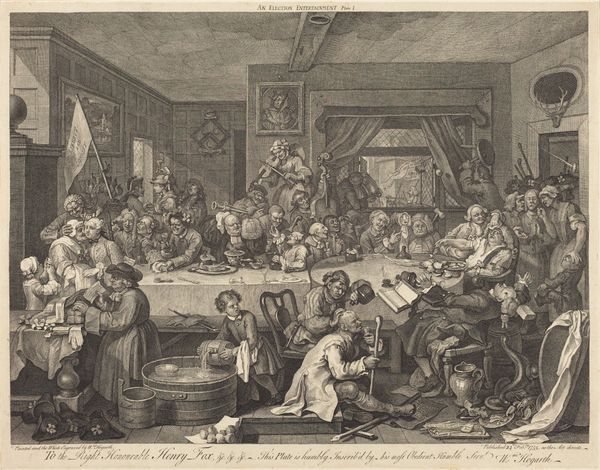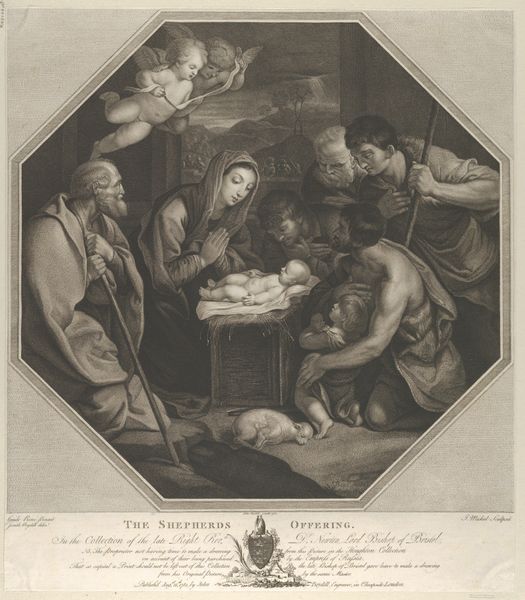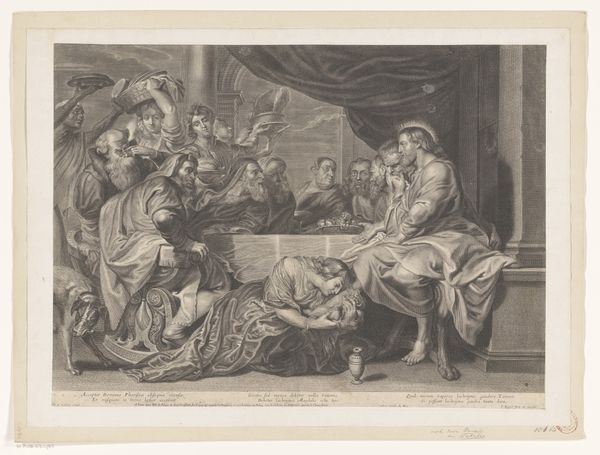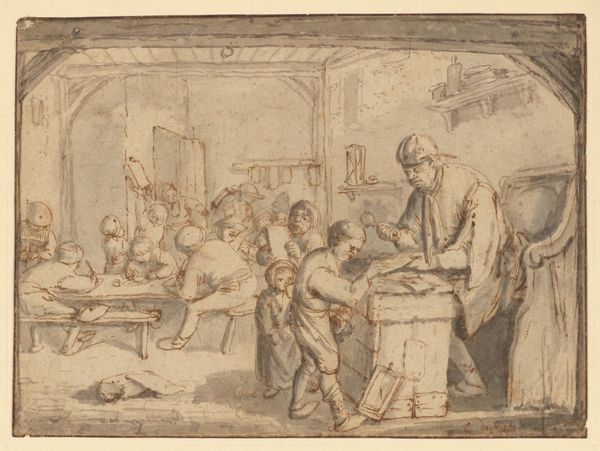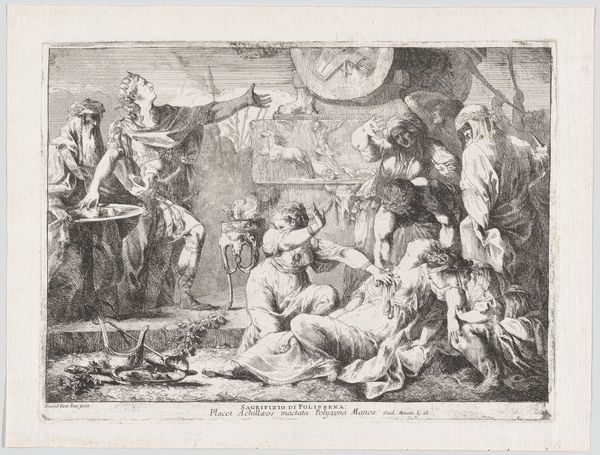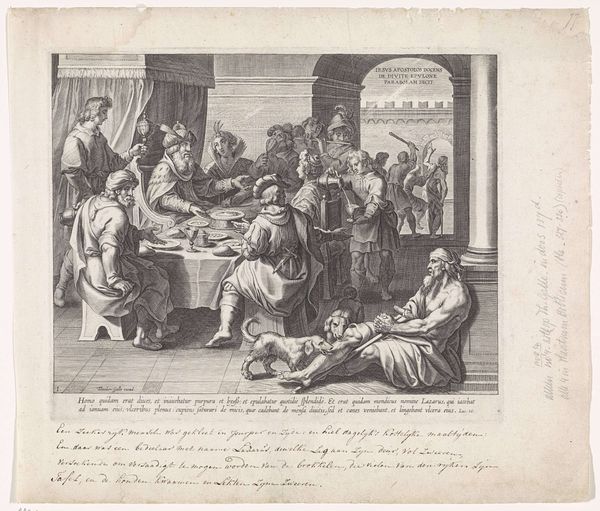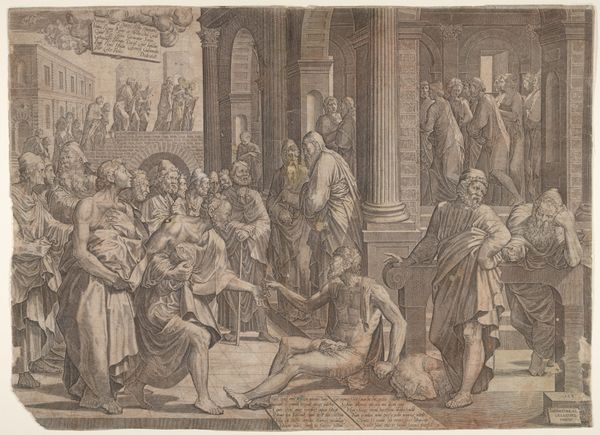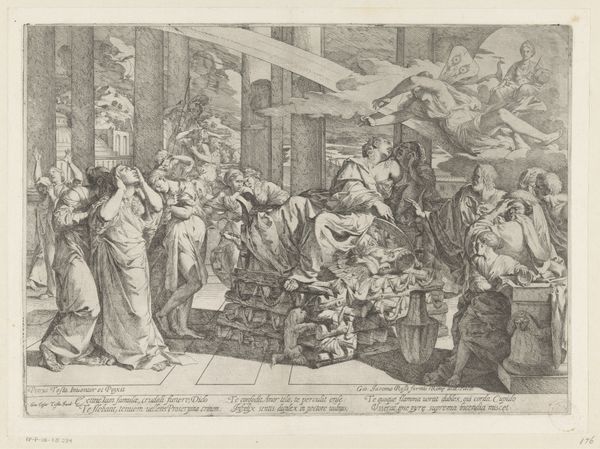
Christ turning wine into water at the wedding at Cana 1743 - 1763
0:00
0:00
drawing, print, engraving
#
drawing
#
narrative-art
#
baroque
# print
#
history-painting
#
engraving
Dimensions: Sheet: 14 1/8 × 19 15/16 in. (35.9 × 50.7 cm)
Copyright: Public Domain
Curator: Pietro Monaco's print, "Christ Turning Water into Wine at the Wedding at Cana," created sometime between 1743 and 1763, presents a complex scene teeming with figures, architecture, and a miraculous event. Editor: My first impression is how ornate the engraving is. It captures a flurry of activity within a rather formal setting, yet feels surprisingly domestic with the inclusion of pets like a dog and a cat in such a momentous and divine occurrence. The use of a very elaborate architectural setting suggests a social commentary for who this print may have been designed. Curator: Considering the Baroque context, the dense composition serves as a means to convey a spectacle – of not just the divine event, but also the abundant social gathering. It also appears to me like the focus is given to the people to whom labor is appointed – rather than simply showcasing Christ, a certain visual weight is given to the servants, one filling vases, and one possibly playing the instruments shown. The choice of printmaking as a medium itself implies a desire for wider distribution, bringing religious narratives into more accessible spheres. The social context here would dictate production and circulation; it wasn't just about high art but broader consumption and potential instruction for the masses. Editor: Right, and looking at how Monaco uses the lines, particularly in Christ's robes, we can see the emphasis on form and drama. Light emanates from Christ as he points his finger towards the scene of conversion. The architectural elements—columns, arches—reinforce this sense of grandeur and stability that the Baroque is keen on illustrating. He masterfully arranges the figures to create focal points that highlight both the divine miracle and its impact on the gathered guests, like when one gazes upon the dog sitting under the table. It’s interesting how this compositional focus guides the viewer's eye and emphasizes the miracle. Curator: Exactly, the very act of reproducing a painting of such stature in print, democratizing religious iconography, provides insight into a broader social drive to proliferate ideologies and challenge exclusivity. And considering he chooses a piece originally painted by Jacopo Bassano, and produces it in a very detailed engraving speaks about its goal, possibly to further celebrate it as indicated by the note at the bottom. Editor: Seeing this work from the viewpoint of visual harmony gives me a deeper perspective than solely approaching it from historical relevance. It goes beyond its function and reveals its sophisticated visual syntax. Curator: I would then agree by recognizing how form meets the economic purpose, highlighting its distribution network as a social feat by those appointed to carry labor at such moment.
Comments
No comments
Be the first to comment and join the conversation on the ultimate creative platform.
